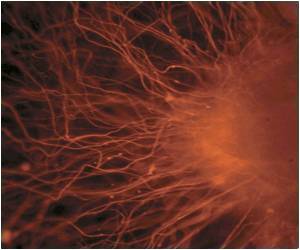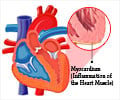Epicardium cells of the heart were successfully grown for over 50 days using stem cells, providing heart attack patients with better treatment option.
Highlights
- Scientists devise a method for growing stem cells into epicardium cells, which is the outer layer of the heart
- These stem cells were induced to grow into heart muscle cells by altering the Wnt pathway
- When the transforming growth factor inhibitor was added, the cells continued to grow for over 50 days
The results of the study were published in the Journal Nature Biomedical Engineering, was a significant step in moving towards regeneration of an entire heart. The epicardium cells were found to be similar to the epicardium cells found in the human heart using functional assay as well as morphological assessment.
The Layer Left- Endocardium
Dr. Lian states that the only layer left to grow is the endocardium which is the innermost layer of the heart. The results of the study that showed the successful growth of the epicardium has useful and practical applications in the treatment of heart conditions, especially in patients who suffer a heart attack.
Potential Therapeutic Use
When an individual suffers a heart attack due to the blocked blood vessels, nutrients and oxygen do not reach the heart muscle, resulting in the death of the heart muscles. This is a permanent damage as the heart muscles cannot regrow, which can further increase the problems associated with a heart attack. The epicardium cells that were grown in the current study could be injected into the heart and the muscles potentially restored.
The research team altered the human stem cells to become reporter cells which meant that they would become fluorescent when they developed into epicardium cells. The cells were treated with differential cell signaling molecules and were then treated with Wnt signaling activators which resulted in the fluorescence.
The cells could also be maintained by continuing to generate epicardium cells by treating the cells with a Transforming Growth Factor Beta (TGF) inhibitor. Even after a period of 50 days, the cells continued to proliferate with no signs of lowered proliferation. The cells that were not treated with the TGF inhibitor began to lower proliferation levels after a period of 10 days.
The future holds a lot of promise as the research team continues its effort to grow the inner layer of the heart. If the inner layer of the heart can also be grown, then the possibility of growing a new heart just seems possible.
Stem Cells in the Treatment of Myocardial Infarction
The use of stem cells in people with myocardial repair has always been a much talked about the procedure. There are various sources of stem cells, like the embryonic stem cells, bone marrow stem cells and the fetal stem cells. The most ideal stem cells are found to be induced pluripotent stem cells and embryonic stem cells.
Bone marrow stem cells can either be used for functional recovery or can be used to promote angiogenesis. The success in the use of these stem cells in pre-clinical studies resulted in a large number of clinical trials that were aimed at identifying the efficacy of treatment. Numerous studies have shown that the use of stem cells may be safe but there is little that is understood about the dosage and the time of application of these cells.
The current study that focuses on the growth and differentiation of stem cells into specific cells of the heart, namely the epicardium, results in a more specific treatment method. Heart attack is a frequent phenomenon with a considerable number of people being affected by the condition. The destruction of the cardiac muscle cells is a major setback for people who have suffered a heart attack. However, the introduction of lab-grown epicardium cells would aid in renewing the ability of the heart muscles to function normally. Moreover, continued research that identifies a method to grow a heart in the lab could dramatically improve cardiac care and therapy.
References:
- Stem Cell Therapy: A New Approach for Treatment of Myocardial Infarction - (https://www.omicsonline.org/stem-cell-therapy-a-new-approach-for-treatment-of-myocardial-infarction-2157-7633.S1-004.php?aid=2583)















